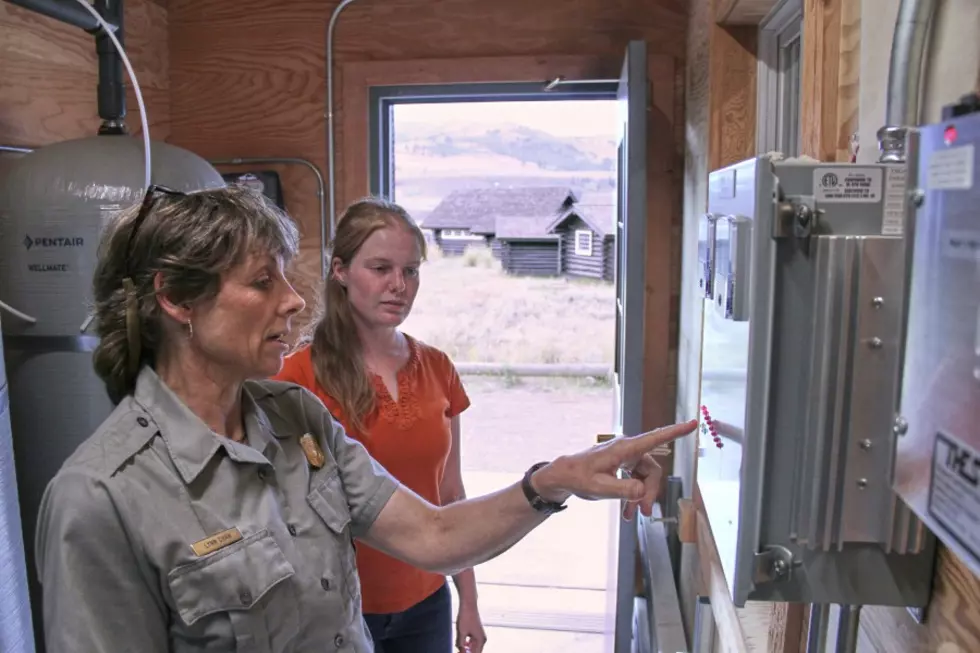
MSU Grad Student Participates in NASA Space Simulation
BOZEMAN — When Madelyne Willis climbed into the capsule at NASA's Johnson Space Center, she knew she was saying goodbye to her familiar world for a long time. Soon the capsule rumbled and shook as the Earth receded in view through the small windows. Then stars appeared. But it would be weeks — filled with a routine of experiments, exercise and card games, along with a handful of stressful situations — before she and her three crewmates would lay eyes on their destination, a heavily cratered moon of Mars called Phobos.
In truth, Willis, a graduate student at Montana State University, never left the NASA facility in Houston — the window view was a computer screen, and although the jostling of the capsule was real, the liftoff was artificial. She always felt Earth's gravity. The 45 days she spent in the capsule were part of an experiment called the Human Exploration Research Analog, or HERA, and nonetheless gave her a glimpse of what an astronaut’s life may be like on a future mission to Mars or beyond. HERA is one of NASA’s Earth-based analog programs that allow scientists to study crew cohesion and autonomy.
"It was surprising how believable the simulation was," said Willis, a doctoral candidate in MSU's multi-department ecology and environmental science program. "We really got into it and felt like we were the first people going to Phobos on a scientific mission to collect samples."
One of a series of experiments as NASA prepares to send humans to the Red Planet, the HERA simulation, which ended in December, was designed to study how the crew could handle isolation and work together to solve problems without immediate contact with mission control. Mimicking the time lag in communications that real Mars missions will experience, by the time Willis reached "Phobos" it took 10 minutes for her to send and receive messages from mission control.
"An alarm would go off and we'd have to figure out right away what was going on, find the right protocol ourselves and then self-organize to respond," Willis said. "There were definitely times when we were being tested under stress."
Most of the time was busy but relaxed, however. Each day in the two-story, 636 square-foot living space ticked to a rhythm that included tending lettuce under grow-lights and shrimp in a small aquarium, using a flight simulator to train on the small spacecraft they would use to touch down on Phobos, checking temperature and airflow levels in the capsule and taking turns with an exercise bike and dumbbells. Within their limited luggage the four crewmates packed board games, books, spa masks and other small pleasures to fill their free time. (See NASA's Q&A video below with Willis and one of her crewmates.)
"Maybe we got lucky, or the psychological evaluation we all had to go through really worked, but we all got along well," Willis said. "We all had a very similar sense of humor. I was surprised that I didn't feel the need for more alone time."
Willis said her fieldwork experience in isolated environments likely helped her make the cut for the mission. While earning her master's in the Department of Land Resources and Environmental Sciences in MSU's College of Agriculture, she journeyed to Greenland to deploy an instrument as part of a collaborative project between MSU and NASA's Jet Propulsion Lab. Her studies have also taken her to Antarctica’s McMurdo Dry Valleys for research with MSU Regents Professor John Priscu.
"You're living in close quarters and working with a small group of people to get a job done," Willis said of her polar experiences. HERA "was a very similar feeling in some ways."
Her current research in the lab of Christine Foreman, professor in the Department of Chemical and Biological Engineering in MSU’s Norm Asbjornson College of Engineering, focuses on understanding how the presence of microbes trapped in Antarctic ice may affect the geochemistry and paleoclimatic record within Antarctic ice cores. Ice cores can provide an analog of sorts for understanding how life might survive on icy moons or planets, and Willis was drawn to the idea of participating in a human spaceflight analog herself, she said.
The data collected during Willis’ mission is just part of what NASA is doing to prepare for its Artemis mission to the Moon and Mars. When asked how her experience with HERA relates to her work now and into the future, Willis said: "I don't know what that will look like yet, but it's definitely an exciting time to be involved in Earth and space science."
- Marshall Swearingen, MSU News Service -
More From K96 FM





![‘Cobra Kai’ Fan Carrie Underwood Makes a Cameo in Season 4 [Watch]](http://townsquare.media/site/204/files/2022/01/attachment-carrie-underwood-cobra-kai.jpg?w=980&q=75)


![Jason Aldean Parties With Former President Donald Trump [Picture]](http://townsquare.media/site/204/files/2021/08/attachment-jason-aldean-daughter-birthday.jpg?w=980&q=75)
